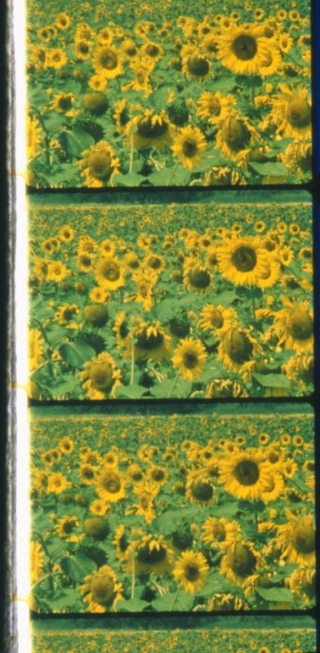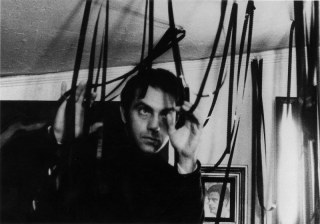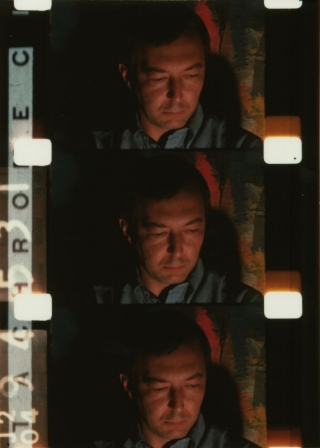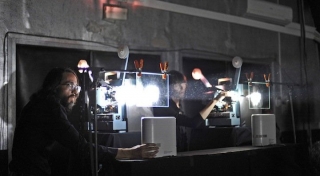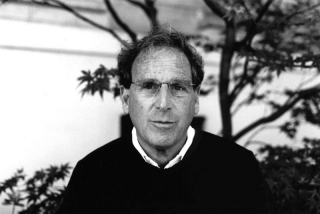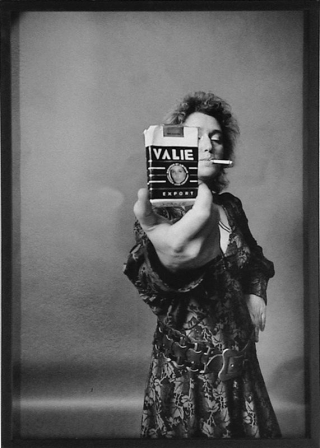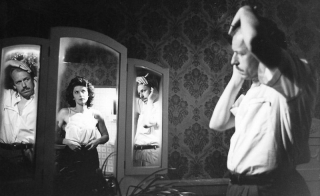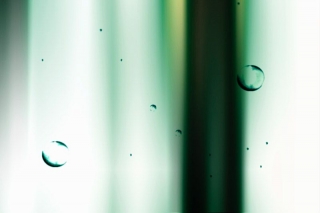Date: 14 March 2004 | Season: Miscellaneous
SPRING WITH ROSE LOWDER
Sunday 14 March 2004, at 2pm
London Tate Britain Clore Auditorium
Rose Lowder will present a selection of her films from the 1970s to the present day. Lowder’s ecological style portrays nature in a unique manner, with each film meticulously constructed by individually composing and exposing every single frame. In projection, condensed clusters of images form a retinal collage of spatial and temporal impressions. This programme mixes early works such as Parcelle (1979) and Les Tournesols (1982) with selections from the ongoing series of Bouquets (1994-present) and other recent films shown for the first time in the UK.
Rose Lowder, Champ Provençale, 1979, colour, silent, 9 min
Rose Lowder, Parcelle, 1979, colour, silent, 3 min
Rose Lowder, Les Tournesols, 1982, colour, silent, 3 min
Rose Lowder, Les Tournesols Colorés, 1983, colour, silent, 3 min
Rose Lowder, Roulement, Rouerie, Aubage, 1978) b/w & colour, silent, 15 min
Rose Lowder, Quiproquo, 1992, colour, sound, 13 min
Rose Lowder, Les Coquelicots, 2000, colour, silent, 3 min (18fps)
Rose Lowder, Bouquets 21-27, 2001-03, colour, silent, 10 min (18fps)
After studying painting and sculpture in artists’ studios and art school in Lima and London, Rose Lowder pursued her artistic practice while working as an editor in the film industry. From 1977 onwards, her research concentrated on the visual aspect of the cinematographic process. A co-founder of Les Archives du film expérimental d’Avignon (AFEA), a film and document collection, Lowder is currently associate professor at the Sorbonne.
PROGRAMME NOTES
SPRING WITH ROSE LOWDER
Sunday 14 March 2004, at 2pm
London Tate Britain Clore Auditorium
“I did not have a preconceived idea of a method for making my films. It is only in trying, with the available means, to solve the problems that occurred that progressively from one film to another, that I found different ways to proceed. Having practised various fine arts for a long time, I began by using the resources belonging to those means of expression in order to explore various ways one can establish relationships between aspects of reality and the essential qualities of the film image seen projected on the screen.
“Like many filmmakers working outside the norms of traditional production, I tested, without intervening physically in the filmed (or not filmed) reality, a variety of procedures that form the substance constituting the film image. This way of working draws attention to the procedure by which the image is produced to the extent that the process of fabrication plays a greater part in the meaning the work intends to convey.
“The concentration on the rendering of the images installs a less direct relationship between what is considered the usual appearance of reality and the film’s images, which leads to changes in how one conceives the link between observed or lived reality, and what is made evident on the screen during the projection of the finished film.”
Text by Rose Lowder excerpted from the booklet that will accompany “A Bouquet of Images”, a forthcoming Re:Voir video release of selected films.
Back to top
Date: 16 April 2004 | Season: Gregory Markopoulos 2004 | Tags: Gregory Markopoulos, Markopoulos
GREGORY J. MARKOPOULOS
16-21 April 2004
London National Film Theatre
GREGORY J. MARKOPOULOS
Towards The Temenos: Myth, Portraiture and Films of Place
Gregory Markopoulos was the archetypal personal filmmaker: an accomplished technician, masterful editor and consummate perfectionist, who created great works of art with a minimum of means. A contemporary of Kenneth Anger, Stan Brakhage and Maya Deren, he was a major figure of the New American Cinema, the post-war movement that developed a new, visionary approach to film.
Markopoulos regarded cinema as “a supreme art in a dark age”. His films illuminate literature, portraiture and architecture, shaping a modern mythology that owes more to European traditions of art-making than the Hollywood culture of commercial cinema. As a formal innovator, he developed rapid editing techniques which cut through time and space, shaping new narrative forms through a “fusion of classic montage with a more abstract system”.
Such a progressive approach to cinema, and the belief in its ability to convey thought and emotion, was grounded in an appreciation of early masters such as von Stroheim and von Sternberg, and a strong, personal commitment to developing the medium beyond its basic use in the narrative sense. Driven by a purity of vision that transcended cinematic conventions, Markopoulos’ sensual and poetic films shimmer with colour and resonate with passion.
This NFT retrospective, centred on key works of the 60s, is the first opportunity in decades to see a selection of Markopoulos’ work in the UK, and shows the filmmaker during his most visible and influential period. After moving to Europe in 1967, he withdrew all of his films from distribution, citing frustration with inadequate projection facilities and unappreciative audiences. Many subsequent films were completed but never shown, as Markopoulos conceived of the Temenos as the ideal site for a spectator’s quest. In this chosen place, the films may elevate the audience’s sense of time while emotionally and physically connecting them to the mythic themes and locations.
He died in 1992, shortly after final editing of the monumental Eniaios, which comprises of 22 cycles totalling over 80 hours of viewing time. This epic work combines radically re-edited versions of all his previous works, and many unseen films, into a single, unified whole. Filmmaker Robert Beavers has established the Temenos Association for the preservation, study and promotion of Markopoulos’ total vision, including his films, journals, letters and collected writings. This NFT season precedes the premiere of the first cycles of Eniaios, to be projected outdoors in the Greek countryside in late June.
www.the-temenos.org
LITERATURE AND MYTH: Fri 16 & Sun 18 Apr 2004
Swain and Twice a Man, two interpretations of classic literature that show a unique command of film language.
FILMS OF PLACE: Sat 17 & Mon 19 Apr 2004
Ming Green, Sorrows and Gammelion. Elegant portraits of architecture and interiors.
THE ILLIAC PASSION: Sat 17 & Tue 20 Apr 2004
The Illiac Passion, an underground interpretation of ‘Prometheus Unbound’, plus Bliss, a study of a small Greek church.
PORTRAITURE: Sun 18 & Wed 21 Apr 2004
Galaxie and Saint Actaeon. Portraits of the artistic community forming a who’s who of the 60s art world.
Markopoulos season curated by Mark Webber for NFT and LUX, in collaboration with Temenos Association. Supported by Greece In London 2004 / The Hellenic Foundation for Culture, UK. With thanks to Robert Beavers, Dr Victoria Solomides and Österreichisches Filmmuseum.
Back to top
Date: 17 April 2004 | Season: Gregory Markopoulos 2004 | Tags: Gregory Markopoulos, Markopoulos
FILMS OF PLACE
Sat 17 April 2004, at 6.20pm
London National Film Theatre NFT2
Markopoulos created many impressions of buildings and places, making in-camera dissolves and superimpositions without any subsequent editing. Ming Green, a portrait of his humble apartment, painted the colour of the title, was made shortly before his departure from New York, while Sorrows was shot at the house in Switzerland built for Wagner by King Ludwig II. Gammelion is a measured and romantic portrayal of an Italian castle, extending seven minutes of photographed ‘film phrases’ with hundreds of fades in and out.
Gregory Markopoulos, Ming Green, USA, 1966, 7 min
Gregory Markopoulos, Gammelion, Italy, 1968, 54 min
Gregory Markopoulos, Sorrows, Switzerland, 1969, 6 min
The programme will be introduced by Robert Beavers, filmmaker and director of Temenos Inc.
Also Screening: Monday 19 April 2004, at 8.40pm, NFT2
PROGRAMME NOTES
FILMS OF PLACE
Sat 17 April 2004, at 6.20pm
London National Film Theatre NFT2
MING GREEN
Gregory Markopoulos, USA, 1966, 16mm, colour, sound, 7 min
GAMMELION
Gregory Markopoulos, Italy, 1968, 16mm, colour, sound, 54 min
SORROWS
Gregory Markopoulos, Switzerland, 1969, 16mm, colour, sound, 6 min
The work of Gregory Markopoulos occupies a unique position in the history of film. He is widely regarded as one of the masters of the cinematic art, yet since he departed the United States in 1967 his films were almost impossible to see. As a result of his need for total control over the presentation of his vision, he increasingly withdrew himself and his films from the film community he had been so actively involved in up to that point.
In recent years the films of Markopoulos have been gradually reintroduced to the viewing public and have been honoured at major museums and festivals, including retrospectives at the American Centre (Paris 1995), The Whitney Museum of American Art (New York 1996), Pacific Film Archive (San Francisco 1997) The Film Society of Lincoln Centre (New York 2003) and Harvard Film Archive (2003). In May 2003, Robert Beavers and Simon Field presented a screening of Markopoulos films at the Goethe Institute, Athens, to an audience exceeding 350 people, and in June 2004, Temenos Inc. will resume the summer screening programme at the outdoor site in Lyssaraia.
This National Film Theatre season is the first time that so many of the films of Markopoulos have been shown in England on such a scale. Since he withdrew his films from exhibition in the early 1970s, they have been virtually impossible to see in the UK. This high-profile event will also act as a precursor to the resumption of outdoor Temenos projections at a remote site near Arcadia in the Peloponnese in June 2004, where restored films from the epic Eniaios cycle will be presented in public the first time. For three consecutive nights, screenings will take place from 10pm to 4am in the place chosen by Markopoulos as the ideal site for a spectator’s quest, in which his films may elevate the spectators’ sense of time while emotionally and physically connecting them to the mythic themes and locations.
In 1964, he began work on the film which would eventually become The Illiac Passion (1967). During the period in which he was editing and securing funding for that film, he made three films edited entirely in-camera. Galaxie (1966) is a series of 33 portraits of the artistic and intellectual community of Manhattan. Through a Lens Brightly: Mark Turbyfill (1967) is a biographical portrait of the dancer and poet. Ming Green (1966) is an immaculately constructed portrait of his apartment that was shot in a single afternoon. This portrait, painted in the colour of the title, was made a few months before his departure from New York. It is dedicated to the filmmaker Stan Brakhage and was shot without a scenario and edited entirely in the camera: ‘The orchestration of colour, the controlled metrics of the flashing and superimposing images, the sureness of the composition, and the careful placement of musical excerpts make this film one of Markopoulos’ most successful achievements of in-camera editing’ (P. Adams Sitney)
After making Himself as Herself and Eros, O Basileus (both 1967) in New York, Markopoulos moved to Europe, ostensibly to raise money to finally print The Illiac Passion. While in Greece he made the architectural portrait Bliss (1967), and in Italy he shot Gammelion (1967-68), for which seven minutes of footage filmed in the 365 rooms of the Castello Roccasinibalda was extended to almost an hour using over a thousand fades.
‘Shot in available light and with only two rolls of film, Gammelion portrays Castello Roccasinibalda, a castle in Italy with which Markopoulos had long been entranced. Each ‘film phrase’ consisted of only a few frames which he later combined with hundreds of fade-ins and fade-outs, extending seven minutes of footage to 60. The soundtrack includes Rilke’s text: ‘To be Loved, is to be Consumed…’ read forward and in reverse.’ (Pacific Film Archives)
‘Gammelion takes its title from the Greek month suitable for marriage. As the screen slowly winks from dark to light and the reverse, tiny shots – sometimes just single frames – are interjected of the landscape around the castle. We gradually move closer and closer to it, view the corridors, glimpse a nude couple in the frescoes, and then move outside again. The impression of Gammelion is quite unlike that of any other Markopoulos film. It is at once terribly sparse and very rich.’ (P. Adams Sitney)
After The Illiac Passion, Markopoulos continued to work in Europe for the next two years up until Sorrows (1969). Set to music by Beethoven, this lyrical portrait moves from a chilled and misty exterior to the crystalline interior of the Swiss chateau that King Ludwig II built for Wagner.
‘It’s a film in which all of the editing is done in camera. It was very cold that day, there was a little bit of fog, but as I filmed, starting at the main entrance along the road, the fog sort of lifted. The first roll was the outside, the second the inside. By the time I got inside, the sun kept coming out – so it’s like a piece of crystal, it comes to light. I just used a motif from Beethoven’s Leonore overture, which Wagner liked very much.’ (Markopoulos interviewed by Jonas Mekas)
Through the 1970s, though he continued to shoot films (including Genius, 1970, a vision of Faust featuring David Hockney), they were rarely printed. Markopoulos was already developing plans for the Temenos, a dedicated theatre and archive that was to be constructed in his father’s home town of Lyssaraia in Greece. He severed his remaining ties with the film community in 1974, by disassociating himself from Anthology Film Archives and asking P. Adams Sitney to remove the chapter on his films from subsequent editions of the book Visionary Film. In the summer of 1980, Gregory Markopoulos and Robert Beavers held their first, free, open-air screenings on a hillside above Lyssaraia. The screenings were accompanied by publications and this tradition continued annually until 1986.
(Mark Webber)
Back to top
Date: 17 April 2004 | Season: Gregory Markopoulos 2004 | Tags: Gregory Markopoulos, Markopoulos
THE ILLIAC PASSION
Sat 17 April 2004, at 8.40pm
London National Film Theatre NFT2
Throughout his life, Markopoulos remained closely connected to his family background, and ultimately saw the Greek landscape as the ideal setting for viewing his films. The Illiac Passion, one of his most highly acclaimed works, is a visionary interpretation of ‘Prometheus Bound’ starring mythical beings from the 60s underground including Andy Warhol, Jack Smith and Taylor Mead. The soundtrack of this contemporary re-imagining of the classical realm features a reading of Thoreau’s translation of the Aeschylus text and excerpts from Bartók. The preceding film, Bliss,is a brief study of a church on the island of Hydra.
Gregory Markopoulos, Bliss, Greece, 1967, 6 min
Gregory Markopoulos, The Illiac Passion, USA, 1967, 92 min
The programme will be introduced by Robert Beavers, filmmaker and director of Temenos Inc.
Also Screening: Tuesday 20 April 2004, at 6.20pm, NFT2
PROGRAMME NOTES
THE ILLIAC PASSION
Sat 17 April 2004, at 8.40pm
London National Film Theatre NFT2
BLISS
Gregory Markopoulos, Greece, 1967, 16mm, colour, silent, 6 min
THE ILLIAC PASSION
Gregory Markopoulos, USA, 1967, 16mm, colour, sound, 92 min
The work of Gregory Markopoulos occupies a unique position in the history of film. He is widely regarded as one of the masters of the cinematic art, yet since he departed the United States in 1967 his films were almost impossible to see. As a result of his need for total control over the presentation of his vision, he increasingly withdrew himself and his films from the film community he had been so actively involved in up to that point.
In recent years the films of Markopoulos have been gradually reintroduced to the viewing public and have been honoured at major museums and festivals, including retrospectives at the American Centre (Paris 1995), The Whitney Museum of American Art (New York 1996), Pacific Film Archive (San Francisco 1997) The Film Society of Lincoln Centre (New York 2003) and Harvard Film Archive (2003). In May 2003, Robert Beavers and Simon Field presented a screening of Markopoulos films at the Goethe Institute, Athens, to an audience exceeding 350 people, and in June 2004, Temenos Inc. will resume the summer screening programme at the outdoor site in Lyssaraia.
This National Film Theatre season is the first time that so many of the films of Markopoulos have been shown in England on such a scale. Since he withdrew his films from exhibition in the early 1970s, they have been virtually impossible to see in the UK. This high-profile event will also act as a precursor to the resumption of outdoor Temenos projections at a remote site near Arcadia in the Peloponnese in June 2004, where restored films from the epic Eniaios cycle will be presented in public the first time. For three consecutive nights, screenings will take place from 10pm to 4am in the place chosen by Markopoulos as the ideal site for a spectator’s quest, in which his films may elevate the spectators’ sense of time while emotionally and physically connecting them to the mythic themes and locations.
After making Himself as Herself and Eros, O Basileus (both 1967) in New York, Markopoulos moved to Europe, ostensibly to raise money to finally print The Illiac Passion. While in Greece he made the architectural portrait Bliss (1967),shot over the course of two days using only available light to create a lyrical study of the interior of the Church of St. John on the island of Hydra.
In the autumn of 1967, Markopoulos was living in Brussels where he persuaded a consortium of businessmen to fund the completion of The Illiac Passion. The film had been shot in 1964 starring Richard Beauvais alongside a cast of well-known underground personalities including Andy Warhol, Gerard Malanga, Taylor Mead, Beverly Grant and Jack Smith. It was originally edited in the first half of 1965, and was then intended as a three hour long, triple projection film in which 35, 16 and 8mm frames would be superimposed on each other to demonstrate different layers of consciousness. During the printing process, Markopoulos commuted between Brussels and the lab in Boulder, Colorado. After a 30-minute section had been completed, he realised that the film would never be ready in time for the film festival at Knokke-le-Zoute, so he reconceived and re-edited the film into the 92-minute version that exists today.
(Mark Webber)
For me the inspiration for The Illiac Passion was derived from Aeschylus’ Prometheus Bound: from the multitude of impressions I had had from time to time of what the other two, lost plays of his trilogy, might have been like. And my own golden circle of inspiration not once ignored what I had read once as a student in a wonderful essay by Gordon Craig that the actor should appear naked upon the stage. Thus, I decided to film the protagonist shaped out of Prometheus naked. The season in New York was proper towards this endeavour, and I had no difficulty once I had cast the role in either filming the protagonist naked or in the most obvious difficulty, developing the film footage. But of the main characters in the Aeschylus, I only kept three: Prometheus, Poseidon, and Io. Prometheus was cast and in my own being thought of as Prometheus (thought he has no such name in the film proper) was portrayed by Mr Richard Beauvais. Poseidon no longer arriving in a bath tub but riding an exercycle was portrayed by Mr Andy Warhol. And Io not chased by a gadfly, but cast in a kind of subterranean aura, slowly becoming porcelain, and imbued with an Asiatic quality, portrayed by Miss Clara Hoover. Of the three members, I had to film most with Richard Beauvais. Andy Warhol’s footage was shot all in one evening, with Life magazine recording the event in colour stills; the stills have never been published. Clara Hoover’s footage was shot over a period of two or three weeks; a part of the time in below zero weather with Richard Beauvais at Lloyd’s Neck, Long Island.
If the point of inspiration for the three central characters (though in essence Beauvais is the only central character) was Aeschylus’ play, the point of inspiration for the mythic characters, if they be so called, were the Greek myths which had always brought me such jubilation: the myths of Narcissus and Echo, Icarus and Daedalus, Hyacinthus and Apollo, Venus and Adonis, Orpheus and Eyrudice, Zeus and Ganymede, and many others. Using these pointillistically, as illuminated, exotic ports of departure I allowed myself to depart, to drift, to journey amongst the emotions of the players I found during my odyssey: until finally, in the final version of The Illiac Passion, the players become but the molecules of the nude protagonist, gyrating and struggling, all in love, bound and unbound, from situation to situation in the vast sea of emotion which becomes the filmmaker’s proudest endeavour.
One more characterisation should be mentioned as a direct descendant of the two characters who bind Prometheus in the opening passages of the Greek play. The characterisation which I have in mind is that of the inimitable Mr Taylor Mead (underground poet and film personality) who portrays in composite the two characters from Aeschylus: Power and Force. Some film spectators, having seen The Illiac Passion (one dissenting that he was needed in the film!), have looked to him as a sprite, as a fire image; as a fire image because of the costume we selected together for his portrayal. None of these, however, valid as they may seem from the film spectator’s viewpoint, hold as much truth as the filmmaker’s own interpretation: that Taylor Mead is the opposite of the Muse in the film, a Demon; a Demon in the full sense of the Greek word. One has only to think of the film in order to agree to the interpretation. For always, the Demon and the Muse, so deftly portrayed by a true-to-life Muse herself, Mrs Peggy Myrray, are kept apart; apart, that is, they are never seen or superimposed in the same scene or composition together.
(Gregory Markopoulos)
Back to top
Date: 18 April 2004 | Season: Gregory Markopoulos 2004 | Tags: Gregory Markopoulos, Markopoulos
PORTRAITURE
Sunday 18 April 2004, at 6.20pm
London National Film Theatre NFT2
Galaxie consists of thirty-three portraits of important figures from the art world, including painters, poets, critics, filmmakers, and choreographers. Each is shot with a single roll of 16mm film and though edited entirely in-camera, often comprises of many layers of dense superimposition. The subjects were invited to pose in their home, together with objects chosen by them as symbolic extensions of their personality. Saint Actaeon is a rhythmic portrait of historian and aesthete Sir Harold Acton, shot in the gardens of his family villa.
Gregory Markopoulos, Galaxie, USA, 1966, 92 min
Gregory Markopoulos, Saint Actaeon, Italy, 1971, 12 min
The programme will be introduced by Robert Beavers, filmmaker and director of Temenos Inc.
Also Screening: Wednesday 21 April 2004, at 6.20pm, NFT2
PROGRAMME NOTES
PORTRAITURE
Sunday 18 April 2004, at 6.20pm
London National Film Theatre NFT2
GALAXIE
Gregory Markopoulos, USA, 1966, 16mm, colour, sound, 92 min
SAINT ACTAEON
Gregory Markopoulos, Italy, 1971, colour, silent, 12 min
The work of Gregory Markopoulos occupies a unique position in the history of film. He is widely regarded as one of the masters of the cinematic art, yet since he departed the United States in 1967 his films were almost impossible to see. As a result of his need for total control over the presentation of his vision, he increasingly withdrew himself and his films from the film community he had been so actively involved in up to that point.
In 1964, he began work on the film which would eventually become The Illiac Passion (1967). During the period in which he was editing and securing funding for that film, he made three films edited entirely in-camera. Ming Green (1966) is an immaculately constructed portrait of his apartment that was shot in a single afternoon. Through a Lens Brightly: Mark Turbyfill (1967) is a biographical portrait of the dancer and poet. A veritable who’s who of the art world in the mid-1960s, Galaxie includes portraits of 33 painters, poets, critics, filmmakers, and choreographers. Shooting with his Bolex camera and utilising an intricate system he developed that allowed for multiple images and for editing the entire work in-camera, Markopoulos created elaborate portraits of such seminal figures as W.H. Auden, Jasper Johns, Erick Hawkins, and Susan Sontag.
‘The filmmaker resurrected the discipline of making films without post-editing in 1966 when he shot his collection of portraits, Galaxie. In making the portraits his method had been to select an object or an activity with personal significance to the subject. Carefully watching the frame-counter on his camera, he would expose a number of takes of one image interspersed with blackness. He would then rewind the film and expose the units of the next view, detail, or object. Each image has its own metrical pace, which alternates with or is superimposed upon the others.’ (P. Adams Sitney)
Throughout the 1980s, Markopoulos also worked on the Eniaios (1948-91), a series of 22 silent film cycles containing material from his 40 years as a filmmaker. The series was fully edited, but not printed, before his death in 1992. It consists of over 80 hours of film and will cost an estimated $800,000 to complete. Robert Beavers is continuing to pursue the construction of the Temenos, and intends to build an archive for Markopoulos’ journals, letters, script, articles and reviews which the filmmaker had linen-bound in handmade cases and are currently stored in a Swiss vault, together with a film theatre for presentation of the complete Eniaios. To date, four of the cycles, thirteen hours in total, have been preserved and printed.
In recent years the films of Markopoulos have been gradually reintroduced to the viewing public and have been honoured at major museums and festivals, including retrospectives at the American Centre (Paris 1995), The Whitney Museum of American Art (New York 1996), Pacific Film Archive (San Francisco 1997) The Film Society of Lincoln Centre (New York 2003) and Harvard Film Archive (2003). In May 2003, Robert Beavers and Simon Field presented a screening of Markopoulos films at the Goethe Institute, Athens, to an audience exceeding 350 people, and in June 2004, Temenos Inc. will resume the summer screening programme at the outdoor site in Lyssaraia.
This National Film Theatre season is the first time that so many of the films of Markopoulos have been shown in England on such a scale. Since he withdrew his films from exhibition in the early 1970s, they have been virtually impossible to see in the UK. This high-profile event will also act as a precursor to the resumption of outdoor Temenos projections at a remote site near Arcadia in the Peloponnese in June 2004, where restored films from the epic Eniaios cycle will be presented in public the first time. For three consecutive nights, screenings will take place from 10pm to 4am in the place chosen by Markopoulos as the ideal site for a spectator’s quest, in which his films may elevate the spectators’ sense of time while emotionally and physically connecting them to the mythic themes and locations.
(Mark Webber)
Back to top
Date: 11 September 2004 | Season: Expanded Cinema 2004 | Tags: Dortmund, Expanded Cinema
EXPANDED CINEMA: RIDE THE LIGHT
Saturday 11 September 2004, at 3pm
Dortmund PhoenixHalle
Recoder & Gibson, Ride the Light, 2004, c.60 min, multi-projection performance
Working individually and in collaboration as presstapes, Luis Recoder and Sandra Gibson explore the canvas of the filmstrip with the medium of light, manipulating both exposure and projection. For part of this performance, a regular power switch will be used to manually flicker, strobe, and flash forth a unique cinematic phenomenon.
Recoder & Gibson, Fourfold, 2001-04, c.7 min, 4 projector performance
Recoder & Gibson, Color Test, 2003, 5 min, 3 projector performance
Recoder & Gibson, Override, 2004, c.9 min, 2 projector performance
Recoder & Gibson, Ribbon, 2003, 6 min, 4 projector performance
Recoder & Gibson, Alignments for Linea, 2002-04, c.19 min, 2 projector performance
Read more
EXPANDED CINEMA: RIDE THE LIGHT
Saturday 11 September 2004, at 3pm
Dortmund PhoenixHalle
RIDE THE LIGHT
Luis Recoder & Sandra Gibson, USA, 2004, 16mm, colour, sound, c.60 min, multi-projection performance
ride the light is a program of live events for the multiplicity of film projection. the doubling, tripling, and sometimes quadrupling up of screens – in short, the dispersal of cinema – fragments the always already fragmented and in essence, redistributes the temporal distribution of temporality,
the doubling-up of the mechanical-spectacular releases our time machine from the bond of a manufactured ‘ticking away’. the sequential beat of the frame-work (of frame-upon-frame) is followed by the doppelganger to be reproduced not as reproduction of the same thing but as re-production of the dissimilar in simulation.
when twos, threes and fours converge there emerges a ricochet, a shimmer, a ghost. it is this ghosting that cinema pursues with its ‘persistence of vision’ only to erase it from vision – by thickening the still succession, the frame-work in what is called eidetics. ride the light broadens the network of streaks, raises the erasures, re-visions for cinema its indigenous persist-stance.
FOURFOLD
Luis Recoder & Sandra Gibson, USA, 2001-04, 16mm, colour, sound, c.7 min, 4 projector performance
COLOR TEST
Luis Recoder & Sandra Gibson, USA, 2003, 16mm, colour, sound, 5 min, 3 projector performance
OVERRIDE
Luis Recoder & Sandra Gibson, USA, 2004, 16mm, colour, sound, c.9 min, 2 projector performance
RIBBON
Luis Recoder & Sandra Gibson, USA, 2003, 16mm, colour, sound, 6 min, 4 projector performance
ALIGNMENTS FOR LINEA
Luis Recoder & Sandra Gibson, USA, 2002-04, 16mm, colour, sound, c.19 min, 2 projector performance
Back to top
Date: 13 October 2004 | Season: Nathaniel Dorsky | Tags: Nathaniel Dorsky
NATHANIEL DORSKY EUROPEAN TOUR
13 October—15 November 2004
European Tour
As an antidote to the frenetic pace and complexity of modern life, Nathaniel Dorsky’s films invite an an audience to connect at a precious level of intimacy, nourishing the mind and spirit. With films assembled in an almost selfless way, the viewer is given the freedom to express oneself more fully, rather than be consciously absorbed in the projections of another person. ‘In these films the audience is the central character and, hopefully, the screen your best friend.’
The films are photographed, non-narrative and have none of the visual trickery we might associate with the ‘avant-garde’. Dorsky’s camera is drawn towards those transient moments of wonder that often pass unnoticed in daily life: the jewelled refraction of sunlight on water, reflections from windows and dappled shadows cast along the ground. His iridescent cinematography is arranged in carefully montaged phrases that remain entirely open to the viewer’s personal interpretation; no heavily coded meanings and subtexts are imposed through associations in the editing. The world floods through the lens, onto the screen and into our minds.
Dorsky approaches each film as though it is a song, weaving together lyrical statements in a rhythmic cadence. His work achieves a sensitive balance between humanity, nature and the ethereal, creating space for private reflection. The screenings in Autumn 2004 showcase his new film Threnody, ‘an offering to a friend who has died’, and will include readings from his recently published book Devotional Cinema (Tuumba Press, 2003).
Nathaniel Dorsky lives in San Francisco, where he makes a living as a professional ‘film doctor’, editing documentaries that often appear on American public television and the festival circuit. In 1967 he won an Emmy award for his photographic work on the CBS production Gaugin in Tahiti: Search for Paradise. He has been making personal films since 1964, and his works are in the permanent collections of the Museum of Modern Art (New York), Pacific Film Archives (Berkeley), Image Forum (Tokyo) and Centre Georges Pompidou (Paris). It is widely acknowledged that the ‘most beautiful image’ sequence – a plastic bag floating in the wind – from the Oscar winning feature American Beauty was directly inspired by a similar shot from Dorsky’s film Variations.
Mark Webber
Nathaniel Dorsky: European Tour
13 October 2004, 8pm
Centre Georges Pompidou, Paris, France
THRENODY, 2004, colour, silent, 20 mins
ALAYA, 1976-87, colour, silent, 28 mins
THE VISITATION, 2002, colour, silent, 18 mins
15 October 2004, 8pm
Centre Georges Pompidou, Paris, France
VARIATIONS , 1992-98, colour, silent, 24 mins
ARBOR VITAE, 1999-2000, colour, silent, 28 mins
LOVE’S REFRAIN, 2000-01, colour, silent, 23 mins
21 October 2004, 6pm
Filmpodium, Zurich, Switzerland
THRENODY, 2004, colour, silent, 20 mins
ALAYA, 1976-87, colour, silent, 28 mins
THE VISITATION, 2002, colour, silent, 18 mins
31 October 2004, 4pm
London Film Festival, NFT, London, England
Devotional Cinema: A Lecture Screening
THRENODY, 2004, colour, silent, 20 mins
VARIATIONS , 1992-98, colour, silent, 24 mins
+ lecture and reading
SPECIAL EVENT: JEROME HILER
8 November 2004, 7pm
Lux Salon, London, England
An extremely rare screening of films presented by Jerome Hiler, including new and previously unseen works.
9 November 2004, 6:30pm
Tate Modern, London, England
THE VISITATION, 2002, colour, silent, 18 mins
ALAYA, 1976-87, colour, silent, 28 mins
ARBOR VITAE, 1999-2000, colour, silent, 28 mins
11-15 November 2004
OpFilm, de Balie, Amsterdam, Netherlands
THRENODY, 2004, colour, silent, 20 mins
ALAYA, 1976-87, colour, silent, 28 mins
THE VISITATION, 2002, colour, silent, 18 mins
European tour co-ordinated by Mark Webber. With thanks to the London Film Festival, Philippe-Alain Michaud, Christophe Bichon, Stuart Comer, Hannes Schupbach, Erwin van ‘t Hart, Ben Cook, Josh Siegel, Nathaniel Dorsky and Jerome Hiler.
Date: 14 October 2004 | Season: Valie Export
VALIE EXPORT
14—20 October 2004
London National Film Theatre NFT2
Valie Export is a filmmaker, multi-media and performance artist whose challenging work, which fundamentally explores the intersection between the human body and the technological media, has pushed the boundaries of feminism and the avant-garde. As an artist not confined to the gallery, she also made experimental short films and complex feature-length narratives.
Her expanded cinema and performance pieces of the 1960s (often with the participation Peter Weibel, with whom she collaborated on her first two features) gained attention not only in the underground art scene, but also in national television and newspapers. In the wake of the Viennese Actionism movement, Export’s ‘Female Actionism’ was a radical protest that aimed to realign society’s attitude to women and redress the historical portrayal of the female body in art. In the performance, Tapp und Tast Kino (Touch Cinema), Export critiqued the voyeurism of cinema by appearing in the streets of Vienna wearing a box covered by curtains through which the public were invited to feel her naked chest.
Export initially took an extreme and provocative stance to resist the traditional modes of female representation and gain an independence of thought and expression. Sexually explicit and physically jarring, the early short films can be difficult viewing – in Mann & Frau & Animal she is seen masturbating and menstruating and in … Remote … Remote … she uses a knife to push back the cuticles of her fingertips until they bleed, before immersing them in milk. Not for the squeamish or puritanical viewer.
Having first exploded sexual and cultural taboos, Export focussed on the responsibility of the individual in the social environment. With the more conventional features she made in the 1970s and 80s, narrative filmmaking is used as a vehicle to explore ideas evident in her visual art within a more accessible format. Export integrates the language of commercial cinema with quotations from her videotapes, performances and photographic works, which often appear as discreet sections or in dialogue with the plot.
Working with the moving image, Export uses time and space to scrutinise the different layers between reality and the illusion of reality. Her analysis of corruption and the media reached an acute point in the mid-80s, when the plot of The Practice of Love was based on a contemporary arms dealing scandal that was played out in the Austrian press whilst the film was being made.
Export’s work is transgressive and political: an art intended to provoke social change. Concerned with identity, conscience and communication, it was central to the powerful feminist discourse that developed in the 1960s and 70s and is just as relevant today. This season at the NFT, and a major exhibition at Camden Arts Centre, is a vital opportunity to survey the work of one of the most original and influential figures of contemporary art. —Mark Webber
Valie Export NFT season curated by Mark Webber. With thanks to Ian White.
The Valie Export exhibition at Camden Arts Centre runs from 10 September—31 October 2004.
Date: 16 October 2004 | Season: Valie Export
THE PRACTICE OF LOVE
Saturday 16 October 2004, at 8:40pm
London National Film Theatre NFT2
The Practice of Love is a thriller in which television journalist Judith Wiener investigates the events that led to a fatal subway accident, revealing facts which implicate her two lovers in a terrorist conspiracy. Alfons seems out of his depth with his involvement with an arms smuggling racket, while Joseph is a respected psychologist who appears unable to manage his own emotional affairs. The film explores what goes on just below the surface, and how this affects private and public behaviour.
Valie Export, The Practice of Love (Die Praxis der Liebe), Austria, 1984, 90 mins
with Adelheid Arndt, Rüdiger Vogler and Hagnot Elischka
Also screening: Wednesday 20 October 2004, at 6:20pm
Date: 30 October 2004 | Season: London Film Festival 2004 | Tags: London Film Festival
VIDEO VISIONS
Saturday 30 October 2004, at 2pm
London National Film Theatre NFT3
fordbrothers, Preserving Cultural Traditions in a Period of Instability, Austria, 2004, 3 min
fordbrothers explode the visual field as a strangely familiar, but unidentified, voice rails against computer technology and modern society.
Fred Worden, Amongst the Persuaded, USA, 2004, 23 min
The digital revolution is coming, and an old-school film-maker is trying to come to terms with it. ‘The human susceptibility to self-delusion has, at least, this defining characteristic: Easy to spot in others, hard to see in oneself.’ (Fred Worden)
Didi Bruckmayr & Michael Strohmann, Ich Bin Traurig, Austria, 2004, 5 min
An aria for 3D modelling, transformed and decomposed using the cultural filters of opera and heavy metal.
Robin Dupuis, Anoxi, Canada, 2003, 4 min
Effervescent digital animation of vapours and particles.
Michaela Grill, Kilvo, Austria, 2004, 6 min
Minimal is maximal. A synaesthestic composition in black, white and grey.
Myriam Bessette, Nuée, Canada, 2003, 3 min
Bleached out bliss of dripping colour fields.
Jan van Nuenen, Set-4, Netherlands, 2003, 4 min
Endless late night cable television sports programmes, remixed into deep space: from inanity to infinity.
Robert Cauble, Alice in Wonderland Or Who Is Guy Debord?, USA, 2003, 23 min
Alice longs for a more exciting life away from Victorian England, but is she ready for the Society of the Spectacle? Conventional animation is subverted to tell the strange tale of Alice and the Situationists.
PROGRAMME NOTES
VIDEO VISIONS
Saturday 30 October 2004, at 2pm
London National Film Theatre NFT3
PRESERVING CULTURAL TRADITIONS IN A PERIOD OF INSTABILITY
fordbrothers, Austria, 2004, video, colour, sound, 3 min
Preserving Cultural Traditions in a Period of Instability is a computer-generated video based on artefacts occurring during compression procedures. A short hypnotic and monotonous sound-loop underlines the structural character of the video footage, whilst a commentary by Stan Brakhage on the rise of digital technologies and new media forms the second sound layer. (Thomas Draschan)
AMONGST THE PERSUADED
Fred Worden, USA, 2004, video, colour, sound, 23 min
The human susceptibility to self-delusion has, at least, this defining characteristic: Easy to spot in others, hard to see in oneself. This film began as an effort to channel the stresses engendered by my daily New York Times fix. The news of the world read as a relentless collective descent into a 21st century Jonestown. More accurately, into a scattered offering of competing Jonestowns, each proffering its own distinctive brand of cool aid. In the free marketplace of mindsets, you’re free to choose your poison. Each of us sees things in our own way. What I was seeing was that the common denominator driver of so many of the man-made disasters charted in each day’s New York Times was the human penchant for delusional thinking. The war on terror, to cite only one simple example, seemed to me essentially reducible to their delusions versus our delusions, with the stakes being who will be the first to have its ass handed to it. My decision to make the mechanics and infrastructure of self-delusion the subject of a film was easy enough once I committed to two operating principles. The first was that the film had to be about my delusions and those of my milieu rather than about their delusions. The second, somewhat contradictory principle is that it really is impossible to see one’s own delusions. The essence of self-delusion as pathology is that it is at all times invisible to its host. For this reason, I could not cast this film with my actual delusions, but rather had to work with analogue surrogates. This suited my purposes just fine as my interest was never with the actual content of delusional thinking, but rather with its forms. How we get there, move in, make ourselves comfortable and then bend our talents to defending the fort. How the most gracious and nimble of mental eruptions can end up tripping down the slippery slope from inspired possibility through true belief to leaden and entrenched delusion. With a cast of available characters acting as themselves. Don’t believe a word. See the iron jaws of the mechanism at work as the filmmaker falls into the biggest and most obvious delusion of all: the belief that he can master his own delusions by making a film about them. (Fred Worden)
ICH BIN TRAURIG (I AM SAD)
Didi Bruckmayr & Michael Strohmann, Austria, 2004, video, colour, sound, 5 min
Ich Bin Traurig (I am sad) is part of a series of works on “digital translations of reality” (Didi Bruckmayr). Fuckhead – one of the band projects of cultural workers Bruckmayr/Strohmann – is one of these translation projects. The masculinity-charged raging of brachial heavy metal music runs – analogue to the technical processes of sound mixing – through the filter of another cultural form of expression: the opera and its melodramatic employment of voices, as well as the distant, cool, electronic creation of sound. The result is a bastard, a science-fiction being whose existence grows increasingly precarious. Fuckhead possibly tells – in image and sound and data – of human sensibilities at the edge, of that which the author J.G. Ballard calls “psychopathologies of the future” (in his epochal novel Crash). The expression quite aptly represents this video. Its “clinical picture” is that of the love sick, intense sorrow at the loss of love: “I am sad, because you do not understand me / melancholy steals my sleep at night.” Siemar Aigner’s pathetic bass drowns out the scratchy surface of electronic accompaniment. The antagonism between the Spartan electronics, which tend to refuse to lead the melody, and the presence of a human voice is mirrored in the visual translation of the number: the image of a human face (created in a computer by means of 3-D software) is horizontally deformed to the rhythm of the verse, disheveled along the lines of the acoustic information from the computer. When the song stops, black takes over the picture and narrows the narrative space down to music. The absence of the human element is heavier (textually, as well as visually) than its presence. (Michael Loebenstein)
ANOXI
Robin Dupuis, Canada, 2003, video, colour, sound, 4 min
The images are generated frame by frame as stills, usually generated from simple shape or forms (square, circle, line etc.), and processed in various commercial software (Photoshop, Vegas, DL Combustion) and/or open source software (Drone, Bidule), before and/or after being edited in sequence. I produce a lot of images and animated sequences to create what I call an image bank, from which I select parts for each project I work on. I do the same for sound. The image and sound in Anoxi is pure synthesis, there is no capture, scan or recording of external material of any sort. (Robin Dupuis)
KILVO
Michaela Grill, Austria, 2004, video, b/w, sound, 6 min
A remote, barren, almost unfriendly landscape: Kilvo in Lapland was the inspiration for Radian’s music, and even the accompanying visuals by Michaela Grill play with the bare countryside’s resistance to its depiction. A fourfold split screen shows views of this place in a kaleidoscope of animated digital postcards. The normal associations – visions of majestic, or at least marketable, beauty, of exotic or untouched wilderness – are consistently undermined in Kilvo. Instead of showing an idyll, the landscape is reduced to the greatest degree possible. Lines and contours are stripped from the background of black, white and grey tones. The viewer cannot be sure what is being shown, or implied. For brief moments fleeting images appear then change or are lost. Faithful reproductions are not the important thing here, but the digital transformation of a real landscape into an abstract pattern, translation into a completely different visual form, which at the same time conforms to this landscape. For all its reduction and structural austerity Kilvo also has a playful aspect. The movement in the screen sections is tied to the articulated rhythm of the music and its modulation. The sounds and images are combined in an entertaining and complex game with structures, and with musical and visual synchronisms. In the end everyone can invent Kilvo for themselves. In their reservation and simultaneous openness, the sounds and images offer a projection screen for the viewers’ mental images, for the search for their own imaginary landscape. (Barbara Pichler)
NUÉE
Myriam Bessette, Canada, 2003, video, colour, sound, 3 min
Though synthetically constructed, the fleeting works of Myriam Bessette bring rare tactile qualities to the digital medium. Her earlier videos Nutation and Azur bestowed an organic delicacy to the pure cathode ray signal. In Nuée, streaks of muted hues merge to form a constantly shifting colour field that is overlaid with abstract verdant flecks. The sensorial experience is heightened by a fizzing electronic soundtrack. (Mark Webber)
SET-4
Jan van Nuenen, Netherlands, 2003, video, colour, sound, 4 min
On the TV station Eurosport, the hours between the really exciting matches are filled up with sports pulp. You see endless games, sets and matches ‘live’, accompanied by lethargic commentary. Out of exasperation, Jan van Nuenen recorded three examples of this, which he mixed, overlapped and superimposed into loops. What starts as an ordinary game of ping-pong develops into a kaleidoscopic spiral of dancing high servers, flying springboard divers and rhythmically chopping table-tennis bats. Eventually it becomes a scene that appears to represent the culmination of a bizarre acid dance party. (Jaap Vinken & Martine van Kampen)
ALICE IN WONDERLAND OR WHO IS GUY DEBORD?
Robert Cauble, USA, 2003, video, colour, sound, 23 min
Alice in Wonderland, or Who Is Guy Debord? pairs footage from the Disney cartoon with an alternate sound track. Alice’s quest for the help of philosopher Guy Debord (The Society of the Spectacle) is punctuated by an assaultive TV montage that includes Bush’s aircraft carrier landing. (Chicago Reader)
Back to top
